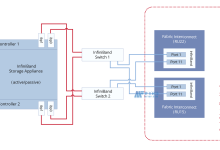linux : Mastering the Secret of Command Combinations
As a Linux user, mastering command combinations are essential to successfully manage and control your system. Command combinations are powerful tools for control over the various functions of the system. By mastering the Linux commands and command combinations, users can interact more effectively with their operating system.
The Linux command line environment provides a wide range of commands to manage and control diverse system operations. The most commonly used command line shells in a Linux environment include Bash, csh, ksh, and zsh. These command line shells are all based on the C programming language and offer unique features, such as improved security, for users.
Command combinations in Linux allow users to combine multiple commands or arguments into a single command, thus making it easier to perform administrative tasks on the system. For example, Linux users can combine the “ls” (list content) and “pwd” (print working directory) commands into a single command, such as “ls -a pwd”. This command will display all files and directories in the current working directory. This type of command combination is often used by experienced users to quickly navigate the file system and perform system administration tasks.
Another type of command combination is the “pipe”. The pipe is used to redirect the output of a command to the input of another command. Pipes are essential for combining several commands into a single command. For example, if you want to search for a specific file within a directory, you could use the “find” command followed by the “grep” command to search for the desired file. This would be written at the command line as “find dir -type f | grep file_name”. This would output the path to any file matching the name given.
To further enhance the user experience, developers often write command combinations using a scripting language such as Bash, python, or Perl. Scripting languages provide an interface to the command line environment while adding a layer of abstraction to individual commands. With scripting, users can quickly and easily write commands to customize their system or automate repetitive tasks.
In conclusion, mastering command combinations is an important skill for Linux users. By understanding and mastering the different command combinations, users can make the most of their system, perform tasks more quickly, and make better use of their time. It is also important to remember that scripting languages can greatly improve the user experience, allowing users to quickly and easily automate tasks.

 国外主机测评 - 国外VPS,国外服务器,国外云服务器,测评及优惠码
国外主机测评 - 国外VPS,国外服务器,国外云服务器,测评及优惠码












